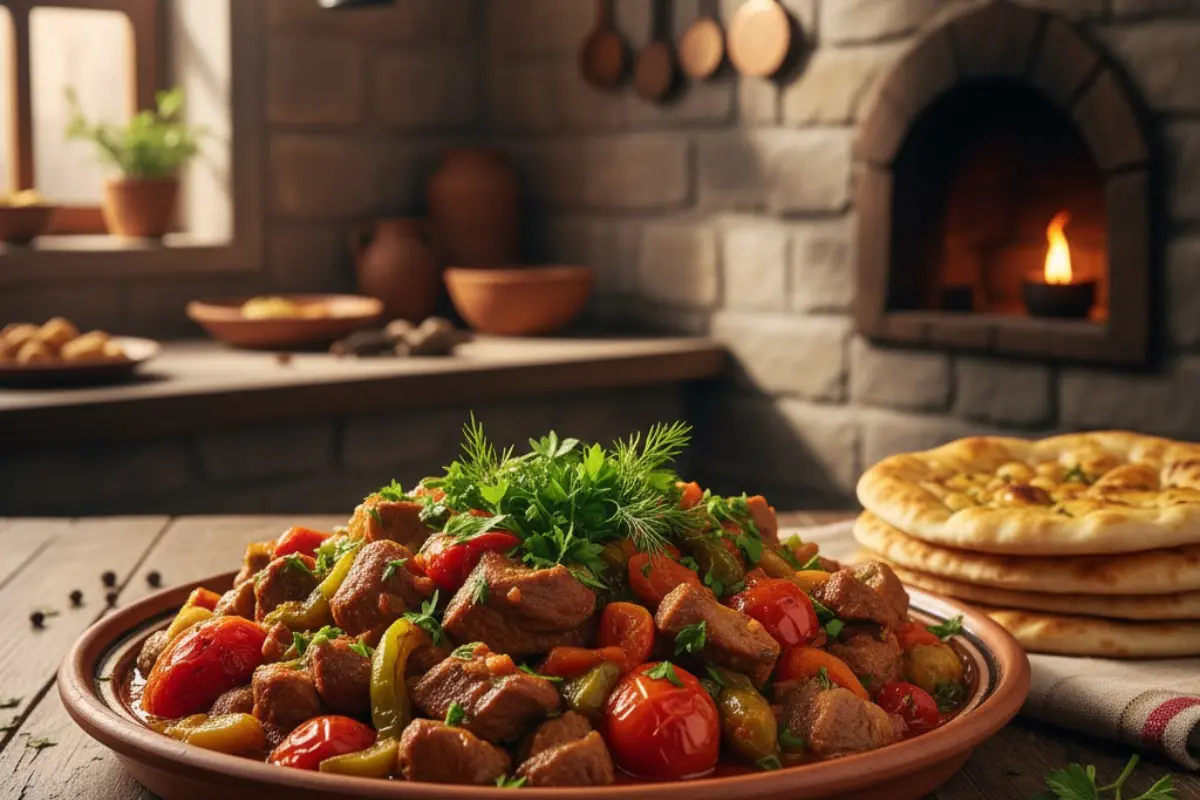Ceıvır is more than just a dish; it’s a celebration of Turkish culture and hospitality. Originating from the heart of Turkey, this flavorful meal has been passed down through generations, bringing families and communities together. Whether you’re a seasoned chef or a curious foodie, understanding the essence of Ceıvır offers a deeper appreciation for Turkish culinary traditions.
What Is Ceıvır?
At its core, Ceıvır is a traditional Turkish dish made primarily from lamb or beef, slow-cooked to perfection with a blend of spices and vegetables. The name “Ceıvır” is derived from the Turkish verb “çevir,” meaning “to turn” or “to rotate,” reflecting the method of cooking the meat over an open flame or in a tandoor oven.
The Origins and Cultural Significance
Ceıvır has its roots in the nomadic traditions of Central Asia, where hearty meals were essential for sustenance during long journeys. Over time, it evolved into a communal dish, symbolizing hospitality and unity. In Turkish culture, sharing a meal of Ceıvır signifies trust and strong bonds among those gathered.
Ingredients That Make Ceıvır Special
-
Meat: Lamb or beef, marinated with spices like cumin and black pepper.
-
Vegetables: Onions, tomatoes, and bell peppers.
-
Spices: Cumin, black pepper, and garlic.
-
Fats: Olive oil or rendered sheep fat.
-
Grains: Bulgur wheat or rice.
These ingredients come together to create a dish that’s both hearty and flavorful, offering a taste of Turkish heritage in every bite.
How to Prepare Ceıvır at Home
-
Marinate the Meat: Combine lamb or beef with olive oil, garlic, and spices. Let it marinate for several hours.
-
Sauté Vegetables: In a large pot, sauté onions until golden, then add tomatoes and bell peppers.
-
Cook the Meat: Add the marinated meat to the pot and brown on all sides.
-
Add Grains: Stir in bulgur or rice, allowing it to absorb the flavors.
-
Simmer: Add water to cover the ingredients, bring to a boil, then reduce heat and simmer until the meat is tender and the grains are cooked.
-
Serve: Garnish with fresh herbs like parsley and serve hot with yogurt or flatbread.
Regional Variations of Ceıvır
Across Turkey, Ceıvır is prepared with unique regional twists:
-
Eastern Anatolia: Spicy lamb with sumac.
-
Aegean Region: Incorporation of eggplant and olive oil.
-
Marmara Region: Seafood variations, such as shrimp or fish.
-
Central Anatolia: Addition of legumes like lentils or chickpeas.
These variations reflect the diverse agricultural practices and cultural influences across Turkey.
Ceıvır in Modern Cuisine
While Ceıvır has deep traditional roots, it has also found its place in modern Turkish cuisine. Chefs in urban areas experiment with contemporary techniques, incorporating seasonal vegetables and unique spices to appeal to younger generations. Street food vendors offer quick versions, making it accessible to a broader audience.
Nutritional Benefits
Ceıvır is not only delicious but also nutritious. The combination of lean meat, vegetables, and grains provides a balanced meal rich in protein, fiber, and essential vitamins. The use of olive oil adds healthy fats, contributing to heart health.
Conclusion
Ceıvır is more than just a meal; it’s a reflection of Turkish culture, history, and hospitality. Whether enjoyed during a festive occasion or a casual family gathering, it brings people together, offering a taste of tradition in every bite. By preparing Ceıvır at home, you not only savor a delicious dish but also connect with a rich culinary heritage.
Call to Action
Ready to experience the flavors of Ceıvır? Gather the ingredients, follow the recipe, and embark on a culinary journey through Turkey’s rich traditions.

